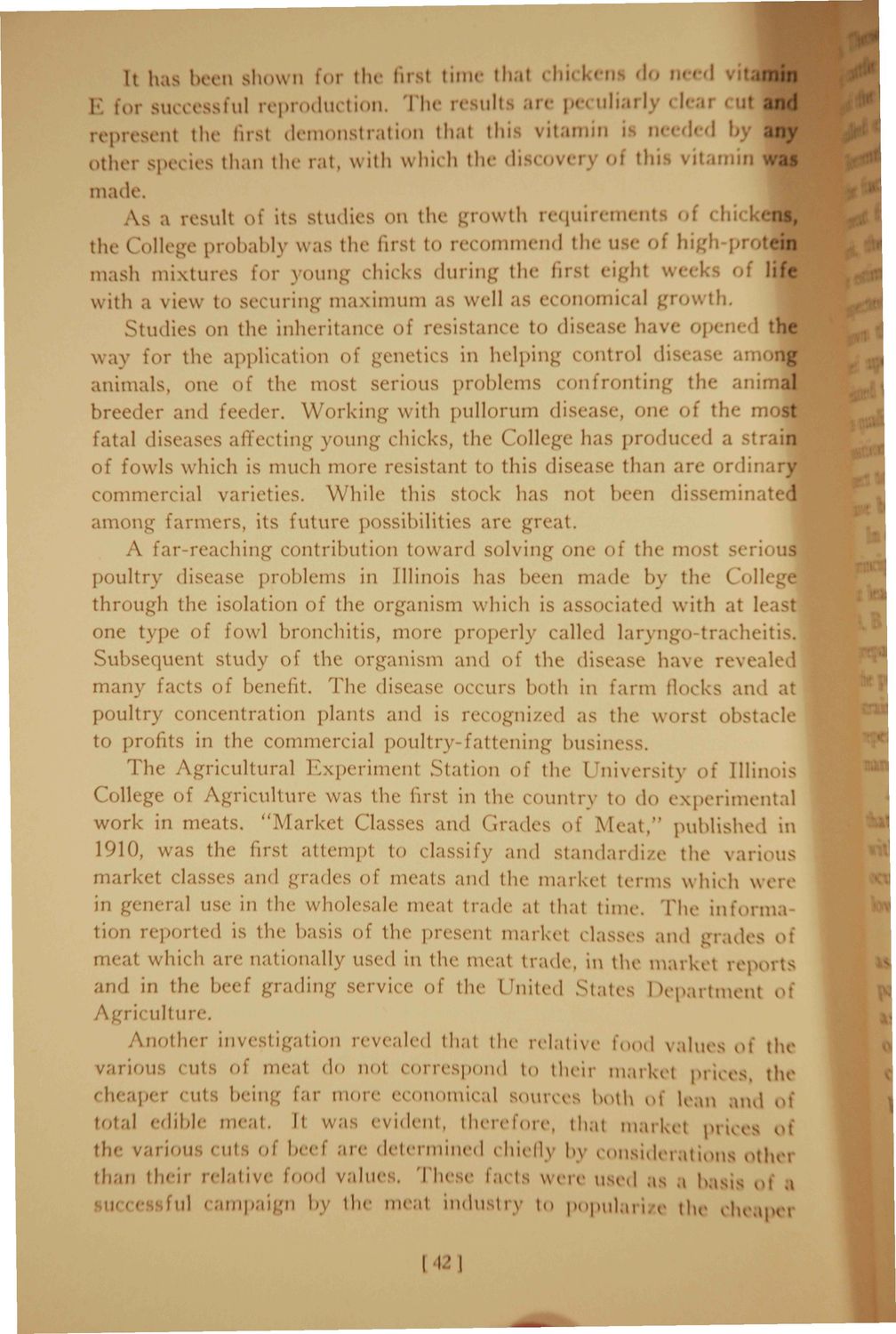Caption: Booklet - One Hundred Million (Impact of UI) (1931)
This is a reduced-resolution page image for fast online browsing.

EXTRACTED TEXT FROM PAGE:
It has been shown foi th< first time thai i hi< ns d I v\ m I b> any represent the first demonstration that tins vitamin Other sp< ies than the rat. with whu h tin made. I OV( iy of tins vitamin tt $ As a result of its studies on the growth requirements hickeni the College probably was the first to recommend the u f higl pi - in mash mixtures for young chicks during the first eight weel of life with a view to securing maximum as well as e onomi tl gi th. < Studies on the inheritance of resistance to disease have open< i the way for the application of genetics in helping control di i mong animals, one of the most serious problems confronting the animal breeder and feeder. Working with pullorum disease, one of the most fatal diseases affecting young chicks, the College has produced a strain of fowls which is much m o r e resistant to this disea e than a r e o r d i n a r y commercial varieties. W h i l e this stork has not been d i s s e m i n a t e d a m o n g farmers, its future possibilities a r e g r e a t . A far-reaching contribution toward solving one- of the most s < poultry disease problems in Illinois has been m a d e by the College through the isolation of the organism which is associated with at least one type of fowl bronchitis, more properly called laryngo-tracheitis Subsequent study of the organism and of the disease have revealed m a n y facts of benefit. T h e disease occurs both in farm fl< S and at poultry concentration plants and is recognized as the worst obstacle to profits in the commercial poultry-fattening business. The Agricultural Experiment Station of the University o\ Illinois College of Agriculture was the first in the country to do experimental work in meats. " M a r k e t Classes and G r a d e s of M e a t . " published in 1910, was the first attempt to classify and Standardize the v a n US market classes and g r a d e s of meats and th< market t e r m s which were in general U < in the wholesale meat t r a d e at that time*. T h e i n f o r m a S tion reported is the basis of the present market classes and grad I I meat which a r e nationally used in the meat trade, in the market r e p o r t s ind in the b f grading service of the United States Department i < Agri< ulture. Another investigation revealed thai the relative food values of the various n i t s of meat do no! correspond i ( , their market pi es the cheapei cuts being fai more economical sources both ol lean and of total edible meat. It was evident, therefore, that market prices o\ the various i uts of beei are detei mined chieflj b\ i onsideration otht than lb'i! relative food valu< These facta were used a i bn >a t MICM ful campaign by the meat industry to populari e the chcai i M'l
|